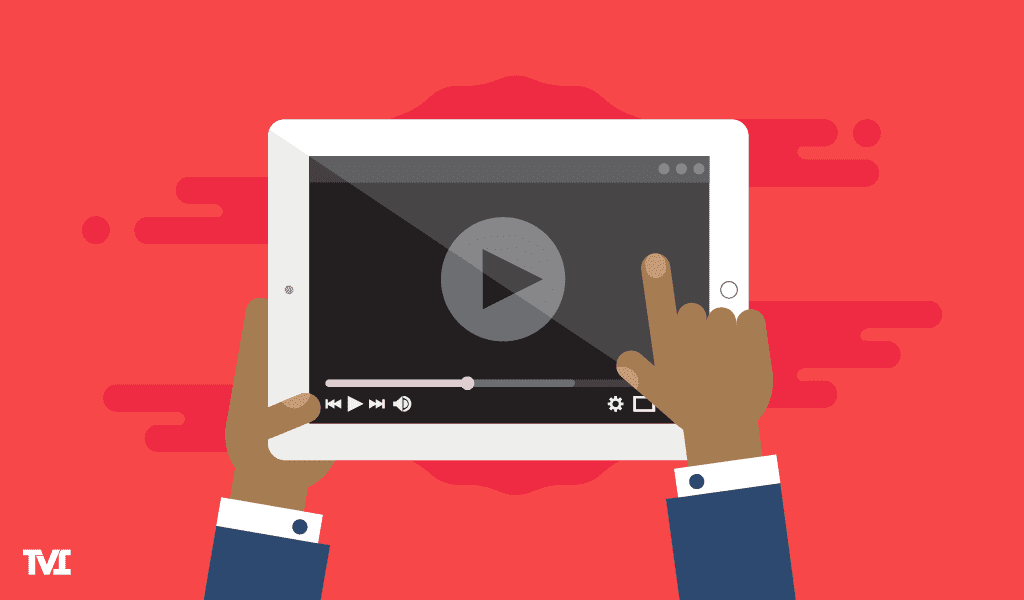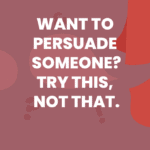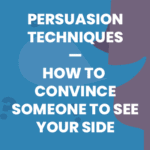Table of Contents
Presentations are the heart of sales. And how effectively you perform under pressure can make or break your career as a salesperson.
But talking about a product or service intelligently and confidently isn’t easy. You want to adequately prepare, capture the attention of your potential customers, and show that what you have to offer is exactly what they need.
Keep reading for 9 sales presentation tips that will wow your audience and boost conversions.
Tip #1: Start off strong
In sales presentations, you have a matter of seconds to engage your audience and establish credibility.
That’s why it’s so important to hook the audience from the beginning.
Start strong, and you’ll have a better chance of keeping your audience’s attention throughout the presentation. But start weak, and you’ll lose them before you even get started.
Here’s how you effectively start your presentation and connect with your audience:
1. Use an attention-grabbing opening line. This could be a joke, story, question, statistic, or anything else that will immediately grab your audience’s attention and keep it.
2. Make sure your slides are visually interesting.
- Use high-quality images and simple, cohesive color palettes.
- Keep the content concise by using bullet points.
Remember, you’re presenting the information; the audience should not be reading long paragraphs on your slides. If needed, you can always further explain your bullets.
3. Keep the intro short and get to the point. While it’s important to hook your audience in the first few seconds, don’t get caught up in fancy or long-winded introductions. How will your product or service meet their needs?
Tip #2: Use persuasive language

The goal of a sales presentation is to convince potential customers of their need for your product or service. That’s why persuasive language is key.
But what does persuasive language sound like and how exactly do you use it within your presentation?
Know your audience and your product
Start by identifying your audience’s needs and wants. What problems or pain points are they facing? How does your product or service address this? What is their budget?
Once you know the customers’ needs, you can craft your message. Use language and examples that resonate with their own experience can show them that your solution is best. Think about how you can benefit them. Be specific about how your product can solve their problems or improve their life.
You know what they say: “bring the receipts.” Use case studies, customer testimonials, or favorable statistics whenever you can. For instance, you might say something like, “Four out of five customers reported better sleep and more energy one year after purchasing this mattress.”
This works because you didn’t just tell the customer your opinion of the product; rather, you showed them why the product is worth it. In-depth knowledge of both your customer and your product is crucial when convincing someone to buy.
Types of words to use
Try to use personal pronouns like “I” and “you.” This will help your listener feel like you’re speaking directly to them, and it will make your pitch more personal.
Use strong verbs to convey the benefits of your product or service. For instance, instead of saying “Our product is great,” say “Our product will transform your business.” ← Then walk them through how this is true. Word choice matters, but only if you can back up your claims. Speaking of using words the right way, you want to remember that…
Persuasion is a two-way street
There’s a difference between persuading and manipulating. You have to consider the other person—both parties need to benefit from the deal. Be open to hearing your audience’s objections and address them head-on. Learning to listen well, and put the relationship before the sale, will help you avoid pressuring the customer into buying. If the product isn’t for them, it isn’t for them.
Related:
Tip #3: Tell a story
Connecting with your audience is perhaps the most important part of your sales presentation. One of the best ways to do this is through storytelling.
A well-crafted story helps create a mental visual, which can work wonders when getting the customer to feel emotion or understand an idea or concept.
Using metaphors and examples will help your audience visualize and drive your point home.
A journalist named Rob Walker had a hunch about the value in storytelling, so much so that he put together an interesting experiment:
Walker went on eBay and bought 200 objects for approximately $1 each. He then reached out to 200 authors and asked if they would participate in the “significant object study,” which involved writing a story about one of the objects.
After collecting all of the stories, he went back to eBay to sell all of the objects—except now each one was equipped with its own story. He originally spent just $129 on all of the objects and on the resale made $8,000! Watch David JP Phillips break down the magical science of storytelling here:
When you build a genuine connection with your audience during your sales presentation, you’ll be one step closer to sealing the deal.
Tip #4: Use props

Let’s be honest. Sales presentations can feel a little dry sometimes.
You’re speaking to a group of people, covering the same talking points as previous presentations, and trying to land another sale. Maybe you find yourself in a rut and don’t feel as motivated in your presentations. Maybe it’s getting harder to keep your customers’ attention.
This is when props can be a powerful tool. When used appropriately, props can help to capture attention, convey key messages, and create an emotional connection with the audience.
Presentations with props are memorable.
In college, my geography professor brought artifacts and souvenirs to pass around during his lectures. Each one came from a specific city or country he had previously visited. The fact that he’d been to the places he taught about was impressive, but holding tangible items from these places made his stories come to life.
Props support your product or service
One of the most important things to consider is the type of prop that will best represent your product or service. You want to choose a prop that will help your audience better understand what you’re selling.
Of course, the best kind of “prop” is showing a potential customer the actual product or service in action. If you’re selling kitchen knives, demonstrating how to use the knives on various types of food allows you to talk through the benefits. If you’re selling a new software application, a computer screen or tablet showcasing the software would be ideal.
Props add personality to the presentation
Keep in mind that props can also add levity and humor to your sales presentation. If you can find a way to make your audience laugh, they’ll be more inclined to remember your product or service.
Just be careful not to overdo it—too many jokes could turn your presentation into a comedy routine rather than a sales pitch.
Props create an emotional connection
Let’s say you’re selling a new baby formula. Showing photos or videos of happy babies can create an emotional bond with your audience. When customers can connect on an emotional level with your product or service, it can lead to a more memorable experience.
Tip #5: Be prepared
Sales presentations can be daunting. You’re probably thinking about all the ways you could mess up: not knowing what to say or blanking on your product knowledge.
But don’t worry! Here are a few easy steps you can take to make sure you’re prepared for your next sales presentation:
Practice your presentation. Do this several times in front of colleagues, friends, or family. This will help you to get comfortable with your material and prevent you from forgetting what to say.
Make a list of all the possible questions the client could ask. Practice your answers to them. This way, you’ll be able to think on your feet and address any concerns the client may have with ease.
Relax and enjoy it! Take a deep breath, and remind yourself that the people in the room are not against you. They’re looking for a connection. Treat your presentation like a conversation with a group of friends.
Being prepared for whatever comes your way will give you that extra boost of confidence going into your sales pitch.
Tip #6: Dress the part

Dressing the part for your sales presentation can mean the difference between success and failure. What you wear has a direct impact on 1) how you feel and 2) how you’re perceived. In a high-stakes sales presentation, it’s important to make a good impression.
When dressing for success, there are a few things to keep in mind.
First, consider the context of the presentation. If you’re meeting with potential clients in a formal setting, it’s important to dress accordingly.
A suit or business casual attire will convey professionalism and authority. However, if you’re presenting to a less formal audience, you may want to dress down to build rapport.
Second, think about the message you want to send. Are you trying to convey approachability or authority? Creativity or reliability? Your clothing should complement the message of your sales pitch, not distract from it.
Tip #7: Make eye contact
If you’ve ever given a presentation in school, you know the importance of eye contact. Your teacher may have taught you to shift your gaze to your peers around the room while speaking. And for good reason.
A presentation isn’t nearly as effective or powerful when you look anywhere other than the people you’re speaking to.
The same goes for sales presentations.
First, eye contact shows that you prioritize connection. The more connected the audience feels to the conversation, the more likely they’ll listen to what you have to say.
Second, eye contact keeps your audience engaged. If you’re constantly looking at your notes or the slides, they’ll get bored.
Studies have shown that making eye contact can actually increase the likelihood of your audience retaining information and being persuaded by your argument.
Third, making eye contact conveys confidence. If you look like you know what you’re talking about, your audience will be more likely to believe in what you’re selling.
Tip #8: Use body language
Another important tool in the persuader’s toolkit is body language. The way you carry yourself can influence whether or not your audience is receptive to your message.
Mix up your gestures. Gestures can help emphasize key points and add interest to your presentation. However, if you get stuck using the same gestures over and over again, they won’t add anything at all. Use them for things like emphasizing certain points or acknowledging important visuals on your slides. Just don’t overdo it.
Pay attention to how you stand and move. Communicate a confident presence by practicing good posture, widening your stance, and being thoughtful about when you move vs. when you stand still.
Facial expressions matter. Aim for relaxed and confident. Remember, that sometimes your nervousness can show up on your face, so be intentional about your expressions. A warm smile, for example, can convey approachability, while a furrowed brow can convey a lack of enthusiasm or friendliness.
Don’t forget to pause. Pauses can build suspense and help you remember to slow down. They can also give you time to think about what to say next or how you will respond to questions and comments.
Tip #9: Speak clearly
As far as sales presentations go, clarity is key. Your audience needs to understand what you’re saying in order to take action on your offer. If you’re mumbling or speaking too fast, they’re likely to miss key points or become confused.
So how do you make sure you’re speaking clearly?
1) Slow down. A slower pace gives you a chance to add some personality into your delivery, and it also helps keep people engaged.
2) Enunciate your words. You don’t want your potential customers to misunderstand your words or any important details about what you’re selling.
3) Speak up. If your audience can’t hear you, they’re not going to be very receptive to your message.
4) Use simple language. You don’t want to overwhelm your audience with technical jargon or long-winded explanations.
5) Repeat key points. If you only say something once, there’s a good chance that your audience will forget it by the end of the presentation. But if you emphasize it a couple of times, they’re much more likely to remember it.
Believe in yourself and what you’re selling

Of course, it’s easier to write about pulling off a great sales presentation than to actually do it. Even when you’ve done everything right, there will be times when you don’t come out on top. #facts
But tuning into the key details, along with a whole lotta practice, will add up to big results over time when it comes to mastering your sales presentations.
And regardless of the outcome, when you continue to learn and iterate along the way, that’s a win. Keep at it.





